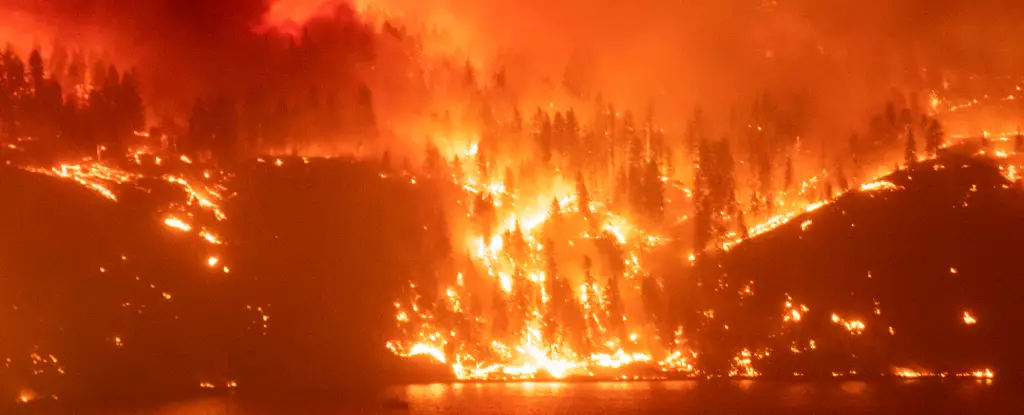Across the globe, a profound crisis is unfolding, as wildfires rage through vast landscapes, consuming cities, forests, and natural resources alike. From the burning hills of Los Angeles to the scorched earth of Maui, and from the parched landscapes in southern Appalachia to the smoke-filled skies of Canada, this phenomenon is both alarming and pervasive. The catastrophic impact of these wildfires transcends geographical boundaries, and it raises pressing questions about our evolving relationship with fire and how it reflects broader environmental changes. Are we witnessing a calamitous future defined by unprecedented fire events, or is there a coherent narrative that can contextualize our current predicament in historical terms?
As a scholar devoted to the intricacies of fire history, I assert that we can indeed trace both a narrative and a historical parallel. This complex interplay begins with humanity’s age-old affiliation with fire— a bond that has shaped our societies and environments over millennia. Yet, the recent rapid escalation of fire intensity and frequency signals an unprecedented shift in this relationship. The human influence on fire dynamics has grown dramatically, particularly in the wake of the Industrial Revolution and the widespread adoption of fossil fuels.
Fire: A Historical Companion
Since the conclusion of the last Ice Age approximately 11,500 years ago, humanity has molded the Earth’s landscapes through various fire practices. These changes have played a vital role in redefining ecological systems, creating environments more susceptible to burning. Historical analyses indicate that large-scale events such as the depopulation of the Americas allowed natural landscapes to flourish, storing vast amounts of carbon and potentially steering Earth toward the Little Ice Age from the late 16th century to the mid-19th century. But this delicate ecological balance has faced challenges.
Fire has co-evolved with life on Earth for over 420 million years. There exists a natural equilibrium—checks and balances—that moderates the influence of fire on landscapes. However, the 20th and 21st centuries have witnessed a fundamental transformation in this dynamic with the rampant combustion of fossil fuels, which has not only altered fire’s characteristic behaviors but has also reshaped societal norms. These energy sources are not merely replacements for the ecological roles of fire; they fundamentally change the way communities engage with their environments, from urban planning to agricultural practices.
As society transitioned into a fossil fuel-based existence, a “pyric transition” emerged, complicating the tug-of-war between natural and industrialized fire systems. Modern techniques for fire suppression are increasingly reliant on technology—pumps, engines, bulldozers, and aerial firefighting—while traditional fire management practices are undervalued or entirely neglected. This industrial response often backfires, as it inadvertently fuels the competition between landscape fires and anthropogenic fires, creating a dangerous interplay with dire consequences.
This phenomenon isn’t novel; as early as the 1990s, U.S. land management agencies acknowledged the detrimental repercussions of fire suppression policies, advocating for the reintroduction of fire as a natural ecological process. Yet progress has been slow and inadequate, as “bad fire” continues to outstrip the beneficial effects of prescribed burns. Fire operates not in isolation, but as a synthesis of its surroundings, drawing upon the accumulated fuels and land use practices that predetermine its behavior.
While climate change dominates discussions about our current predicament—acting as a powerful catalyst for increasing wildfire severity—it is vital not to overlook land use factors. Both climate change and the shift to fossil-fuel consumption derive from our society’s historical trajectory, creating a complex web of interactions that characterize the current reality of megafires.
The catastrophic fires that plague modern times echo back to historical practices of land clearing and logging, which left landscapes vulnerable to uncontrollable blazes. In response, government interventions sought to curtail environmental degradation, but in the process, they inadvertently encouraged the growth of fuel-laden landscapes. Fires that were once integral to ecological cycles have been exiled, resulting in conditions ripe for explosive burn events that devastate the environment and human life alike.
Looking Ahead: A Fire Age?
Considering the mounting evidence, one can anticipate the emergence of a new epoch—the Pyrocene—akin to the Ice Ages of the Pleistocene. In this era, fire will dominate the Earth’s biogeography, influencing everything from climate patterns to species migration, triggering mass extinctions, and irreversibly altering ecosystems. The dual realms of fire—the living landscapes and the industrialized lithic landscapes—are merging, and humanity’s unique relationship with fire is profoundly reshaping the planet.
As we navigate this uncharted territory, we must acknowledge that changing fire practices will have far-reaching implications for our environment. If we fail to adjust our perceptions and policies surrounding fire management, we risk losing not only the landscapes we cherish but also the very fabric of life on Earth. To confront the realities of the Pyrocene, we must engage in a reevaluation of our longstanding relationship with fire, or face dire consequences—an awakening that could spell disaster for both humanity and the planet. California, a frontline witness to these changes, serves as a stark reminder of the path we are currently on.


Leave a Reply